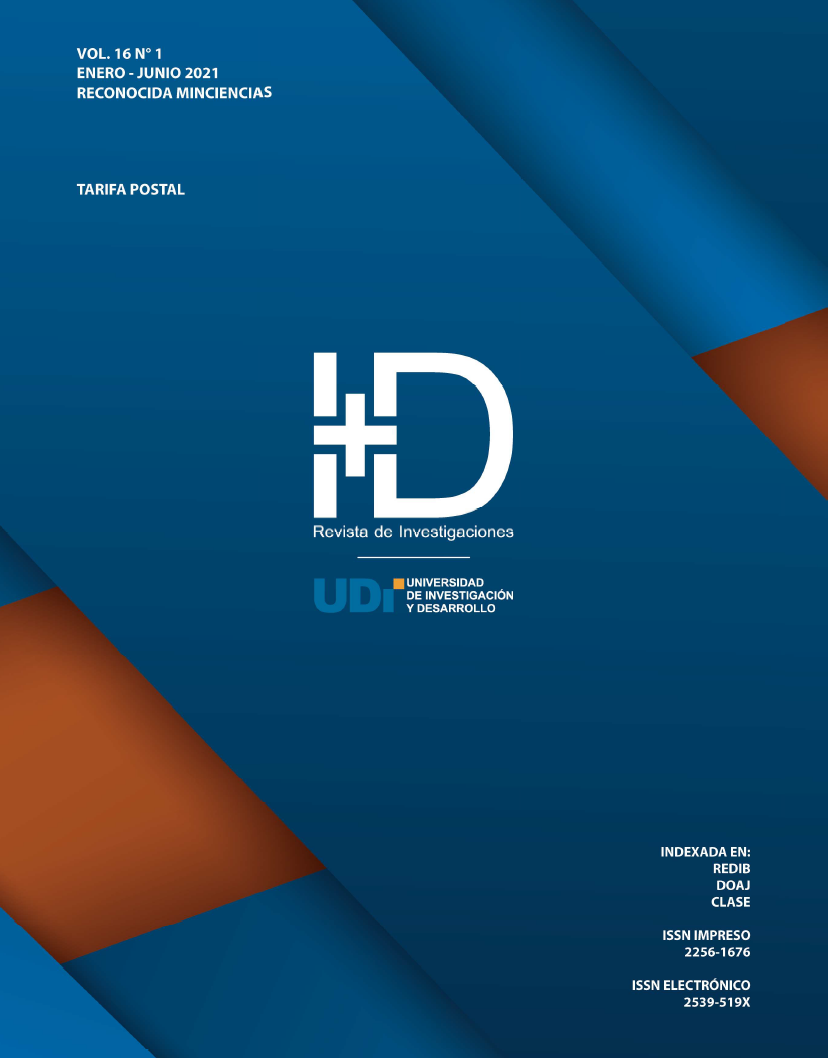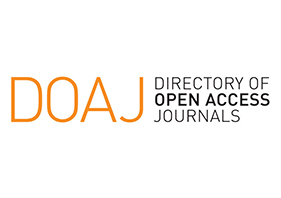Design of a playful activity for teaching the Maximum Coverage Problem: Set up the hospital
DOI:
https://doi.org/10.33304/revinv.v16n1-2021015Keywords:
simulation game, playful activity, maximum coverage, mathematical model, location of facilitiesAbstract
This article contains the design and development of a playful activity with which it is possible to explain the terms and relationships that are part of the concept of the maximum coverage problem. For this purpose, the methodology of third order cybernetics was selected and used in the formulation of didactic activities, with which it was possible to characterize the different elements of the referred problem and to establish the form of relation among them, in order to establish a context and a sequence of activities that allow the explanation of the concept of maximum coverage through a game whose purpose is to learn, and that was tested on students of a curricular space and a research seedbed. The design employed and the playful activity that resulted from the process show how it is possible to construct didactic activities for teaching engineering problems from a cybernetic perspective.Downloads
References
Álvarez García, B. (2008). Modelos de elección binaria. Universidad de Vigo. http://alvarez.webs.uvigo.es/teaching_archivos/ectria2_0708/binary.pdf
Barragan Diaz, J. M. y Cucaita Urbina, C. A. (2010). Localización y distribución de instalaciones industriales en industrias AJM Ltda. Universidad Libre de Colombia.
Boloori Arabani, A. y Farahani, R. Z. (2012). Facility Location Dynamics: an Overview of Classifications and Applications. Computers and Industrial Engineering, 62(1), 408-420. https://doi.org/10.1016/j.cie.2011.09.018
Brito-Vallina, M. L., Alemán-Romero, I., Fraga-Guerra, E., Para-García, J. L. y Arias de Tapia, R. I. (2011). Papel de la modelación matemática en la formación de los ingenieros. Ingeniería Mecánica, 14(2), 129-139.
Church, R. y ReVelle, C. (1974). The Maximal Covering Location Problem. Papers in Regional Science, 32(1), 101-118. https://doi.org/10.1111/j.1435-5597.1974.tb00902.x
Crawford, B., Soto, R., Legue, I. F. y Olguin, E. (2016). A Discrete Invasive Weed Optimization Algorithm for the Set Covering Problem. 2016 11th Iberian Conference on Information Systems and Technologies (CISTI), 1-4. https://doi.org/10.1109/CISTI.2016.7521489
Current, J. R. y Storbeck, J. E. (1988). Capacitated Covering Models. Environment and Planning B: Planning and Design, 15(2), 153-163. https://doi.org/10.1068/b150153
DANE. (2020). Proyecciones y Retroproyecciones de Población. Departamento Administrativo Nacional de Estadística. https://www.dane.gov.co/index.php/estadisticas-por-tema/demografia-y-poblacion/proyecciones-de-poblacion
Daskin, M. S. (1983). A Maximum Expected Covering Location Model: Formulation, Properties and Heuristic Solution. Transportation Science, 17(1), 48-70. https://doi.org/10.1287/trsc.17.1.48
Davila Velez, J. G. (2014). Localizando el centro. En Metodologías activas para la enseñanza de la ingeniería industrial y áreas afines de la Comunidad GEIO y la Red IDDEAL (pp. 294–302). https://es.scribd.com/document/431394108/Memorias-X-Encuentro-Comunidad-Geio-y-III-Red-Iddeal
Drezner, Z. (2007). A General Global Optimization Approach for Solving Location Problems in the Plane. Journal of Global Optimization, 37(2), 305-319. https://doi.org/10.1007/s10898-006-9051-y
Farahani, R. Z., Asgari, N., Heidari, N., Hosseininia, M. y Goh, M. (2012). Covering Problems in Facility Location: A Review. Computers y Industrial Engineering, 62(1), 368-407. https://doi.org/10.1016/j.cie.2011.08.020
Farahani, R. Z. y Hekmatfar, M. (2009). Facility Location. Physica-Verlag. https://doi.org/10.1007/978-3-7908-2151-2
Gobernación del Choco. (2010). Analisis de situacion de salud. Municipios fronterizos del Departamento del Choco. https://www.minsalud.gov.co/plandecenal/mapa/analisis-de-situacion-salud-choco-2010.pdf
Gobernación del Chocó. (2020). Información general. http://www.choco.gov.co/departamento/informacion-general
López, F. y Aguilar, A. (2004). Niveles de cobertura y accesibilidad de la infraestructura de los servicios de salud en la periferia metropolitana de la Ciudad de México. Investigaciones Geográficas, 53, 185-209.
López Robles, C. (2005). Propuesta algorítmica para el problema de máxima cobertura capacitado [tesis de maestría, Universidad de las Américas Puebla]. Colección de tesis digitales Bibliotecas UDLAP: http://catarina.udlap.mx/u_dl_a/tales/documentos/meii/lopez_r_c/
Mapas Interactivos. (2020). Mapa Político de Chocó. Didactalia. https://mapasinteractivos.didactalia.net/comunidad/mapasflashinteractivos/recurso/mapa-politico-de-choco-colombia-igac/a95bbfe4-4cba-480c-aa01-340a7da40ab3
Nova Arevalo, N. A., Pinzón Rueda, W. A., y Quintero, R. (2011). Cibernética de tercer orden y su aplicación a la telefonía móvil.
Onieva, L. (2013). Diseño de Sistemas Productivos y Logísticos. Dextra.
Organización Panamericana de la Salud Colombia. (2010). Indicadores básicos en salud Chocó. https://www.paho.org/col/index.php?option=com_docman&view=download&category_slug=datos-y-estadisticas&alias=1190-ib-choco-2008&Itemid=688
Pngtree. (2020). Materiales de construccción de un hospital-gráfico vectorial. https://es.pngtree.com/freepng/ai-simple-cartoon-medical-hospital-building-materials_4049666.html
Real Academia Española. (2020). Diccionario de la lengua española, 23.ª ed., [versión 23.3 en línea]. https://dle.rae.es/cobertura
ReVelle, C. S., Eiselt, H. A. y Daskin, M. S. (2008). A Bibliography for Some Fundamental Problem Categories in Discrete Location Science. European Journal of Operational Research, 184(3), 817-848. https://doi.org/10.1016/j.ejor.2006.12.044
ReVelle, C. S. y Swain, R. W. (1970). Central Facilities Location. Geographical Analysis, 2(1), 30-42. https://doi.org/10.1111/j.1538-4632.1970.tb00142.x
Rocha-Gonzalez, J. (2011). Propuesta metodológica para la implementación de la lúdica como alternativa en la enseñanza en ingeniería industrial. Tercer Seminario Internacional Sistemas Productivos SISPRO: La Lúdica en la Enseñanza de la Ingeniería Industrial.
Rocha González, J. E., Arango, C. A., Mejía Ospina, L. A. y Pinzón Rueda, W. A. (2014). Diseño y evaluacion de juegos, Dispoitivos lúdicos, pedagógicos y didácticos. Una propuesta desde la cibernética de tercer orden.
Ryabokon, I. (2020). Foto de archivo - ícono del hospital. Ilustración de dibujos animados de ícono de vector de hospital para web. 123RF. https://es.123rf.com/clipart-vectorizado/hospital.html?alttext=1&sti=np4n29d2voqrbr9ya5%7C&mediapopup=66987907
Vargas, C. C. (2013). ¡Ubícate! Actividad lúdica enfocada en planeación estratégica, factores externos y distribución en planta. IX Encuentro Comunidad GEIO y II Encuentro de Red IDDEAL, 270–281. https://tecnologicocomfenalco.edu.co/wp-content/uploads/librosinvestigacion/ceio.pdf
White, J. A. y Case, K. E. (1974). On Covering Problems and the Central Facilities Location Problem. Geographical Analysis, 6(3), 281-294. https://doi.org/10.1111/j.1538-4632.1974.tb00513.x
Xu, J., Murray, A., Wang, Z. y Church, R. (2020). Challenges in Applying Capacitated Covering Models. Transactions in GIS, 24(2), 268-290. https://doi.org/10.1111/tgis.12608












